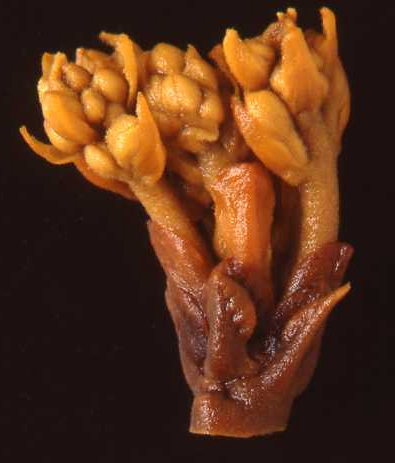
Posts Tagged: fruit set
Make More Avocado Fruit
At a recent grower meeting at South Coast Research and Extension Center in Irvine, Carol Lovatt gave a talk on the use of gibberellic acid to increase avocado fruit set and yield. The registration for the use only occurred this spring, barely in time for growers to use it, so not many applied it. Then we had this heat wave in July and a lot of fruit, whether it had been treated or not, fell off. A show of hands was asked of the growers present, who had applied it this spring. Of the 100 people or so in attendance, only five raised their hands. Of course, this is not a scientific survey, but most would try it again this coming spring, even though they might not have seen results this year.
The following are guidelines that were provided on how to use it, if you should so choose this coming spring:
Use of ProGibb LV PlusR Plant Growth Regulator on Avocado to Increase Fruit Size and Yield
Carol Lovatt
Professor of Plant Physiology, Emerita, and Professor in the Graduate Division, Department of Botany and Plant Sciences, University of California, Riverside carol.lovatt@ucr.edu
ProGibb LV PlusR. On March 27, 2018, gibberellic acid (GA3) was approved for use on avocado to increase fruit size and yield. The only material registered for this purpose is ProGibb LV PlusR, a low volatile organic compound (LVOC) formulation, manufactured by Valent BioSciences, Corporation (Libertyville, IL). Only this product may be used; the older formulation sold under the name ProGibbR and other generic GA3 products cannot be used. Note: (i)the restricted entry interval is only 4 hours; (ii) the preharvest interval is 0 days; and (iii) ProGibb LV PlusÒ can be used in certified organic orchards.
Application Time. ProGibb LV PlusR is applied as a foliar spray at the cauliflower stage of avocado inflorescence development. The applications should be made when 50% of the trees in the block have 50% of their bloom at the cauliflower stage. This means that 25% of the bloom will be at an earlier stage of inflorescence development and 25% will be approaching bloom (open flowers). If you are unable to make the application at this time, being slightly late in applying the treatment affords better efficacy than being too early. Note: applications made at full bloom are typically not effective.
ProGibb LV PlusR Dose and Dilution Rate. The sprays should be applied like a pesticide spray to give full canopy coverage, especially of the developing inflorescences, but not sprayed to run-off. For ground application, use 12.5 fluid ounces of ProGibb LV PlusR (25 grams active ingredient [g ai]) in 100 gallons of water/acre. For aerial (helicopter) application, use 12.5 fluid ounces (25 g ai) in 75 gallons of water /acre. The maximum allowable dose is 25 g GA3 (active ingredient)/acre. Note: the results of our research documented that lower and higher doses are less effective.
Spray Solution pH. The final pH of the spray solution in our research was between pH 5.5 to 6.0. ProGibb LV PlusR is stable at pH 4.0 to 8.5. The pH of the water used should be adjusted accordingly. Note: prolonged exposure of GA3 to a pH > 8.5 should be avoided to prevent breakdown of the material.
Additional Information on Spray Volume. In our research, for ground applications, we used the same amount of GA3 (25 g ai/acre) but a spray volume of 200 to 250 gallons of water/acre, depending on tree size, to achieve good coverage without causing the material to run-off the tree and with minimum spray volume left in the tank after application. Use of spray volumes greater than label rate of 100 gallons of water/acre for ground application is the decision of the Agricultural Commissioner for each county. Consult with your County Agricultural Commissioner, if you wish to apply ProGibb LV PlusR (25 g ai) in more than 100 gallons of water/acre as a ground spray. For the aerial (helicopter) application, the greatest efficacy was achieved with ProGibb LV PlusR (12.5 fluid ounces, 25 g ai) in 75 gallons of water/ acre.
Wetting Agent. In our research, we used the organosilicone surfactant Silwett L-77R or Widespread MaxR (Loveland Industries, Greely, CO) at a final concentration of 0.05%. Similar pure organosilicone type surfactants are acceptable.
Photo: Cauliflower stage inflorescence. Source: Salazar-García et al., 1998.

avocado cauliflower stage
Avocado Illusion
Old crop, new crop. What's up there in the trees? Are they big enough to sell? Is there a good set for next year? These are questions every avocado grower has every year, and often all year long. What is up there in the trees is confounded by what is called the "Avocado Illusion".
In a Science Magazine Letters to the Editor in Dec 1990, Paul Sandorff commented on a book written by Maurice Hershenson called The Moon Illusion. In the book Hershenson described the illusion of why the moon seemed so much larger when it was on the horizon than when it rose to its zenith on the same night. http://science.sciencemag.org/content/250/4988/1646.1

Sandorff said that this illusion applied to avocados since it was so hard to gauge the size of avocados when they were in the tops of the tree canopy. It is the surrounding environment that puts a context to size according to this theory of illusion.
Hershenson added to this observation in the March 1991 Science letters section with the comment that the leaves surrounding the fruit changes our depth perception and so changes our idea of the fruit size.
A further addendum to the avocado illusion theory is that since the fruit are the same color as the leaves (they are both dark green and the fruit unlike most other fruit continues to photosynthesize), it is hard to actually make out the fruit. You can be looking right at the fruit and not see it, confusing it with a leaf.
This illusion makes for difficult fruit estimation. To compensate for this illusion, I will eye the canopy in quadrants, counting the number of fruit, then arbitrarily doubling that total number. It usually gives a pretty close number to the real number of fruit that are in the tree.
Photo:
Can you count the number of fruit in this canopy?

canopy fruit avocado
Hot, Dry Weather and Avocado Pollen Viability
With hot, dry winds, the question came up this week about whether the hot temperatures or the low humidity would affect pollen viability. It turns out that both day and night time temperatures will affect pollen tube growth. That in ‘Hass' approximately 48 hours about 50 deg F is needed to complete pollen tube growth and fertilization. If temperatures drop at night to below 50, there's not enough time for fertilization to occur. As temperatures increase, fertilization occurs more easily. In the tropics, there can be high temperatures and high humidities and good fruit set. But this question was not about fertilization, but how long the pollen would remain viable at high temperatures and low humidities. Work was done Loupassaki and Vasilakis for the World Avocado Congress III Proceedings and they basically found that when humidity dropped below 40%, viability was very low. This last week we have seen humidities below 10%. It probably means that even with bee visitation, non-viable pollen is being delivered to the flowers. When humidities come back up, there will probably be good fertilization, as long as we have decent day and night time temperatures.
Many years ago Gary Bender, down in San Diego, went to the Gulf Region of the Middle East to help establish an avocado orchard. The trees flowered, but never set fruit.

avocado fruits

